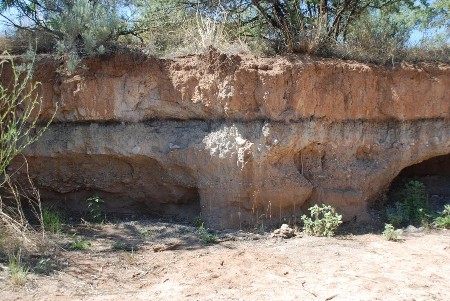
An extraterrestrial impact on Earth’s Northern Hemisphere that dates back 12,800 years has researchers theorizing about how it may have shaped human civilization’s emergence. Known as the Younger Dryas Impact, the event is linked to the onset of global cooling that lasted more than 1,000 years.
Impact debris has been found on four continents: Africa, Asia, Europe, and North America, and on the island of Greenland. The fragments scattered over such a wide area contain platinum, microspherules, and nanodiamonds. The latter two are known to form in cometary impacts.
The latest study of the Younger Dryas Impact comes out of the Institute of Materials and Processes, Shcool of Engineering, at the University of Edinburgh. Author Martin Sweatman is the latest to support the impact theory prior to the dawn of the Neolithic Revolution in Southwest Asia’s Fertile Crescent. The impact of a comet with the Earth, first proposed in 2007, is believed to have contributed to an extinction event involving a number of large animal species and may have caused human populations to switch from being hunter-gatherers to agriculture and the creation of the first towns and cities.
Sweatman who has written a book entitled, “Prehistory Decoded,” notes in a University of Edinburgh news release, “This major cosmic catastrophe seems to have been memorialized on the giant stone pillars of Göbekli Tepe, possibly the ‘World’s first temple’, which is linked with the origin of civilization in the Fertile Crescent of southwest Asia. Did civilization, therefore, begin with a bang?”
The catastrophe is believed to have destroyed a small early northern Syrian Tel known as Abu Hureyra, a pre-Neolithic mound settlement. It is believed, based on the debris field, that a comet entered Earth’s atmosphere causing an airburst that spread glassy chromite, platinum and nanodiamond grains covering what is today Egypt, Iraq, Lebanon, Syria, parts of Europe, Greenland, North and South America as far away as Chile, or approximately 35% of the Earth’s circumference.
How significant was the impact? Second only to the Chicxulub impactor, associated with the extinction of the dinosaurs, states Sweatman. And he argues, significant enough to likely change the direction of human activity leading to the dawn of modern civilization. He points to the first known temple site, Göbekli Tepe, as evidence that humanity underwent a sea change after the comet strike and that the temple commemorates the Younger Dryas event.
The Fertile Crescent whose shape describes an arc that begins in the Tigris-Euphrates valley and extends across Syria before it descends the Mediterranean coast from Lebanon through Israel, Palestine, and on into Egypt, spans an area where the agricultural revolution is believed to have begun along with the first organized permanent settlements, city-states, kingdoms and empires. It appears to be coincident with the end of the mini-Ice Age brought on by the comet impactor.
The hypothesis remains controversial with many researchers arguing that existing evidence is being interpreted to support the theory without counter-arguments. The Abu Hureyra site (see map below) was first excavated in 1972-73. Today it lies under Lake Assad, created by a dam on the Euphrates River. What the site revealed was charcoal, melt glass, iron and silicon-rich spherules, nanodiamonds, and carbon spherules. These are all indications of a significant fire event that would have seen temperatures ranging from 1,840 to 2,300 Celsius (between 3,340 and 4,170 Fahrenheit). These are temperatures far higher than what would occur if caused by a terrestrial-sourced wildfire and more akin to a volcanic eruption of which there is no evidence.

But far more compelling than the temperature evidence is the millennium of cooling that follows the Younger Dryas Impact event, associated with the disappearance of Pleistocene (Ice Age) megafauna such as the Giant Ground Sloth, North American Mammoths, Sabertooth Tigers, and others, along with what archeologists and anthropologists call the Paleoamerican Clovis Culture of human prehistory.
The impact’s profound influence on climate is what relates to us today. At the time of the Younger Dryas, a cold snap lasted from the time of the comet airburst until some 1,300 years later or about 11,500 years ago.
In our world of today, our technological society is playing the role of the comet but instead of causing the Earth to chill, we are heating the planet.
Is there a lesson to be learned? Climate change may have been the impetus to start modern civilization as we know it. And climate change could also end our modern civilization unless we can better accommodate ourselves to our natural world. An extraterrestrial impactor isn’t needed this time, just our ability to see our way to an energy decarbonized world and deliver it.








